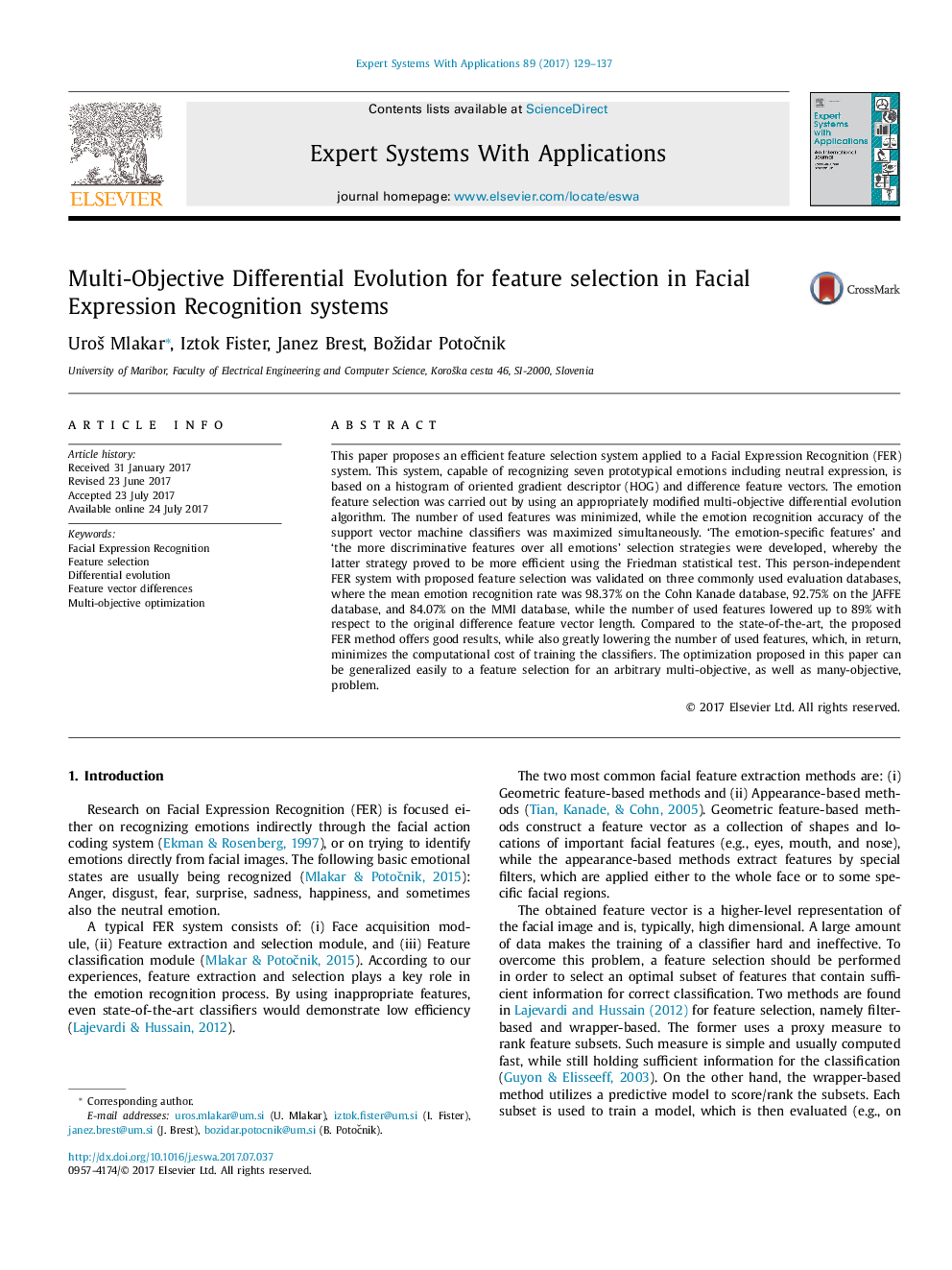ترجمه فارسی عنوان مقاله
تکامل چند جانبه دیفرانسیل برای انتخاب ویژگی در سیستم های تشخیص اصطلاح صورت
عنوان انگلیسی
Multi-Objective Differential Evolution for feature selection in Facial Expression Recognition systems
| کد مقاله | سال انتشار | تعداد صفحات مقاله انگلیسی |
|---|---|---|
| 142037 | 2017 | 9 صفحه PDF |
منبع

Publisher : Elsevier - Science Direct (الزویر - ساینس دایرکت)
Journal : Expert Systems with Applications, Volume 89, 15 December 2017, Pages 129-137
ترجمه کلمات کلیدی
تشخیص چهره، انتخاب ویژگی، تکامل دیفرانسیل، تفاوت های بردار ویژگی، بهینه سازی چند هدفه،
کلمات کلیدی انگلیسی
Facial Expression Recognition; Feature selection; Differential evolution; Feature vector differences; Multi-objective optimization;

